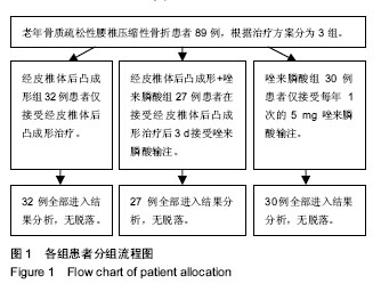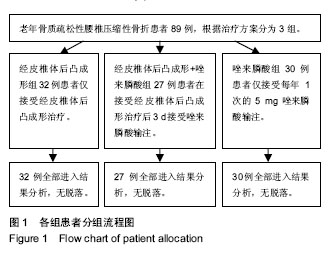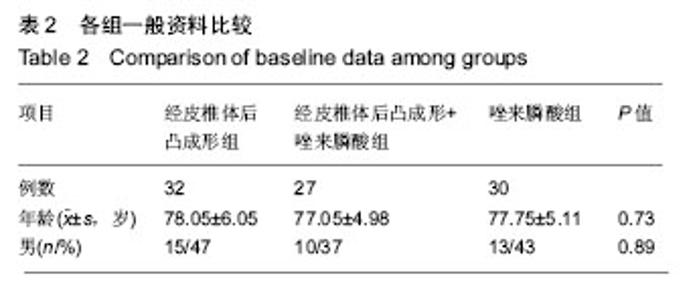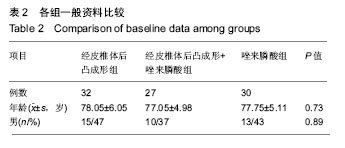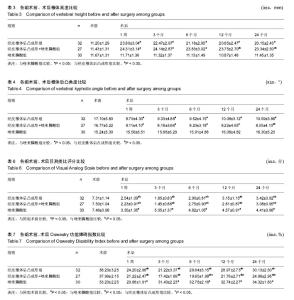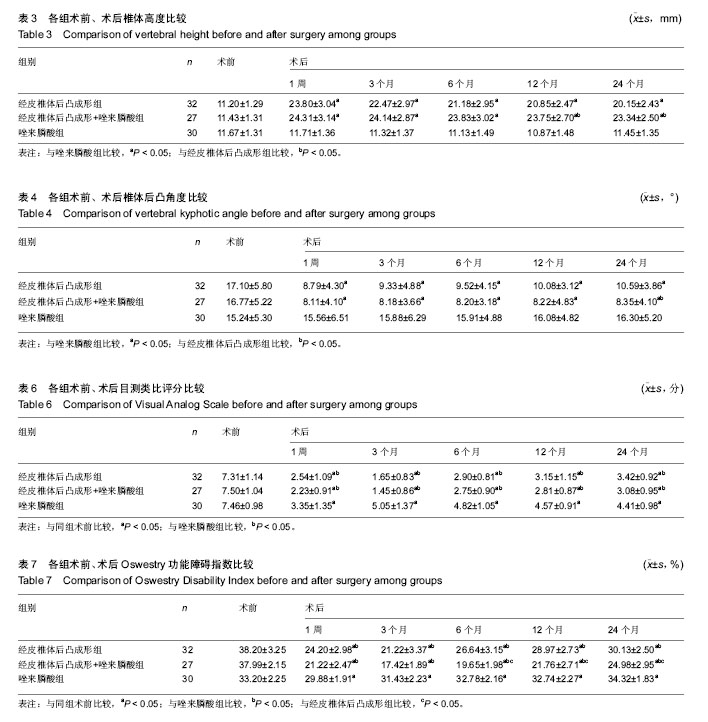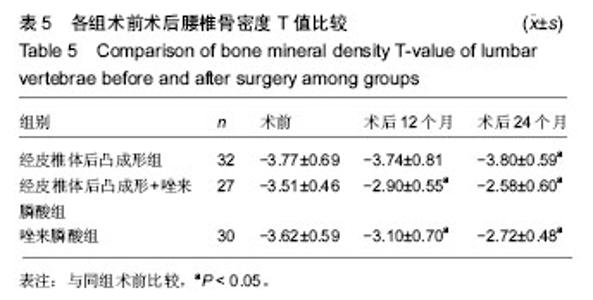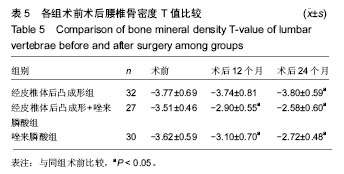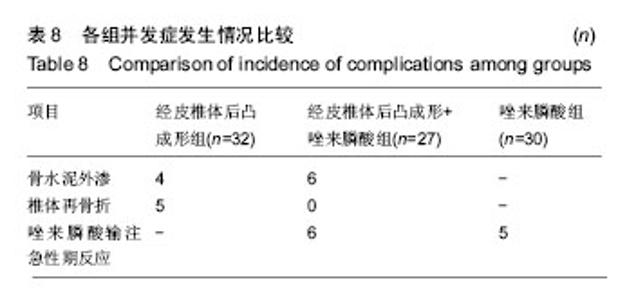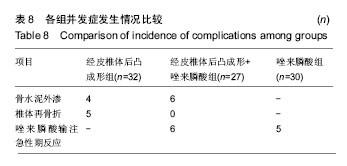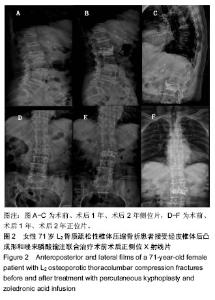| [1] Steinmetz MP, Mekhail A,Benzel EC. Management of metastatic tumors of the spine: strategies and operative indications. Neurosurg Focus. 2001;11(6):e2. [2] 印平,马远征,马迅,等.骨质疏松性椎体压缩性骨折的治疗指南[J].中国骨质疏松杂志,2015,21(6):643-648. [3] Zhang ZL, Liao EY, Xia WB, et al. Alendronate sodium/vitamin D3 combination tablet versus calcitriol for osteoporosis in Chinese postmenopausal women: a 6-month, randomized, open-label, active-comparator-controlled study with a 6-month extension. Osteoporos Int. 2015;26(9):2365-2374. [4] Black DM. Reid, IR, Cauley JA, et al. The effect of 6 versus 9 years of zoledronic acid treatment in osteoporosis: a randomized second extension to the HORIZON-Pivotal Fracture Trial (PFT). J Bone Miner Res. 2015;30(5):934-944.[5] 薛鹏,李玉坤. (2018). 2017年版《原发性骨质疏松症诊疗指南》解读[J]. 河北医科大学学报,2018,39(1):1-6.[6] 李颖,姜志强,黄宏兴,等.补肾健脾中药复方预防椎体成形术后再骨折的随访研究[J]. 中国骨质疏松杂志,2017,23(5):667-671.[7] 谷文莎,游利,陈琳,等.高龄老年女性骨质疏松患者骨代谢特点及使用双膦酸盐的疗效[J]. 中华骨质疏松和骨矿盐疾病杂志, 2015,8(4):300-304. [8] Dhillon S. Zoledronic acid (reclast((r)), aclasta((r): a review in osteoporosis. Drugs. 2016;76(17):1683-1697. [9] Garfin SR, Yuan HA, Reiley MA. New technologies in spine: kyphoplasty and vertebroplasty for the treatment of painful osteoporotic compression fractures. Spine (Phila Pa 1976). 2001;26(14):1511-1515.[10] 孙浩林,李淳德,朱佳琳,等. PVP或PKP治疗激素诱导骨质疏松性椎体压缩骨折的临床研究[J]. 北京大学学报(医学版), 2015, 47(2):242-247. [11] 叶向阳,汤立新,程省,等.骨密度对骨质疏松性椎体压缩性骨折PKP术后骨折再发风险的评估价值[J]. 中国骨质疏松杂志, 2017,23(2):154-158.[12] Yi X, Lu H,Tian F, et al. Recompression in new levels after percutaneous vertebroplasty and kyphoplasty compared with conservative treatment. Arch Orthop Trauma Surg. 2014; 134(1):21-30. [13] Sun K,Liu Y, Peng H, et al. A comparative study of high-viscosity cement percutaneous vertebroplasty vs. low-viscosity cement percutaneous kyphoplasty for treatment of osteoporotic vertebral compression fractures. J Huazhong Univ Sci Technolog Med Sci. 2016;36(3):389-394.[14] Wang CH,Ma JZ, Zhang CC,et al. Comparison of high-viscosity cement vertebroplasty and balloon kyphoplasty for the treatment of osteoporotic vertebral compression fractures. Pain Physician. 2015;18(2):187-194. [15] Tu CW, Huang KF, Hsu HT, et al. Zoledronic acid infusion for lumbar interbody fusion in osteoporosis. J Surg Res. 2014; 192(1):112-116.[16] Sun ZY,Li XF,Zhao H,et al. Percutaneous balloon kyphoplasty in treatment of painful osteoporotic occult vertebral fracture: a retrospective study of 89 cases. Med Sci Monit. 2017;23: 1682-1690. [17] Lin TY,Yang SC, Tsai TT, et al. Correlation between zoledronic acid infusion and repeat vertebroplasty surgery in osteoporotic patients. Curr Med Res Opin. 2016;32(5): 921-927. [18] Ding Q,Chen J,Fan J,et al. Effect of zoledronic acid on lumbar spinal fusion in osteoporotic patients. Eur Spine J. 2017; 26(11):2969-2977. |
